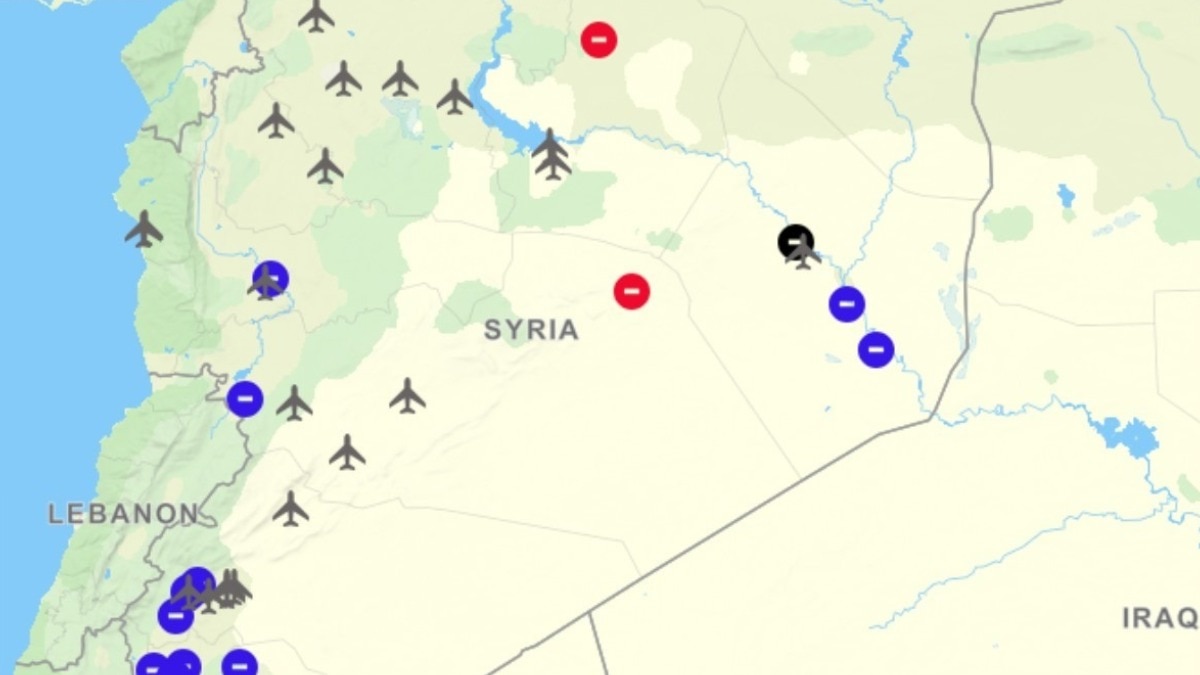President Bashar al-Assad has been overthrown in Syria and rebel forces have captured Damascus. Bashar al-Assad has left the country after 13 years of civil war. Given the rebels’ ties to Islamic State, Western countries have become cautious. These countries fear that the huge stockpile of Syrian weapons and strategic sites might be captured by the enemy.
Just last week, dozens of airstrikes were reported on key targets in Syria. US Central Command (CENTCOM) said that it has struck more than 75 targets, targeting key faces, operatives and camps of ISIS, to ensure that So that ISIS cannot take advantage of the chaotic situation that arose after the end of Assad’s rule.

Source: LiveUMap, ISW, Media Report (Note: Map is not complete)
related news
Israeli Foreign Minister Gideon Saar said on Monday that his country has targeted suspected chemical weapons sites in Syria. He stressed that the aim of the strikes was to prevent these weapons from falling into hostile hands.
Also read: 84 years old enmity, dictator’s terror and bloody game… Massacre in which Syria’s Hama city turned red with blood.
According to India Today’s map, the air strikes by Israel, the US and Turkey have been carried out near or on key military targets in Syria, with the aim of preventing them from being captured by ISIS. Assad received significant support from Iran and Russia as well as the Lebanese terrorist group Hezbollah. The US and other Western countries consider the rebel coalition’s main group, Hayat Tahrir al-Sham (HTS), a terrorist organization.
The US has about 900 troops deployed in Syria, based in Kurdish-controlled oil well areas in the north-east and a garrison in the south-east. America’s role in the Syrian civil war has changed several times, but it has always focused on fighting the remaining Islamic State militants.

How the map of Syria changed within 2 weeks
Russian and Iranian military support kept Bashar al-Assad in power for more than a decade. Last week, Syrian rebel forces captured most of Syria’s northwest. First the rebels captured Aleppo, then Hama and Homs. On Sunday, they entered Syria’s capital Damascus and captured the city without any fight. During this time the government forces fled.
Also read: Somewhere banks, somewhere palaces occupied, refugees started returning… What is happening on the streets of Syria? Videos
The conflict began in 2011 when Syrians peacefully revolted against the government of President Bashar al-Assad. Protests were violently suppressed and communities took up arms to defend themselves.

changing rules
The Syrian conflict involved multiple parties, including Syrian government forces, the army, and the National Defense Forces fighting for Assad’s rule. HTS ruled Idlib, and security forces with links to Turkey, such as the Syrian National Army (SNA), operated in the north. HTS and SNA joined hands to topple the Assad government. The US-backed Syrian Democratic Forces (SDF) still maintain independent rule in the north-east.
In its early years, rebels, including Islamist extremists and moderate groups, gained control of much of the country. By 2014, they held strongholds in the northwest, areas near Hama, Damascus, the southeastern border with Israel, and parts of the Euphrates and al-Hasakah provinces in the northeast.
Also read: It is easy to be a rebel, difficult to run the country? Why is Jolani stuck even after occupying Syria?
In 2014, the equations changed completely with the rise of Islamic State and Russia’s military support to Assad. Islamic State expanded its territory in north-eastern Syria, while Russian airstrikes forced rebel groups to retreat. As time progressed, Assad’s forces, backed by Iran and Hezbollah fighters, recaptured key areas, including Aleppo in 2016 and towns along the Euphrates in 2017. By 2019–2020, government forces had pushed rebels into Idlib province. After this the conflict escalated further.
This year, conflict flared up again in late November when opposition forces advanced towards the capital and launched a new offensive.

